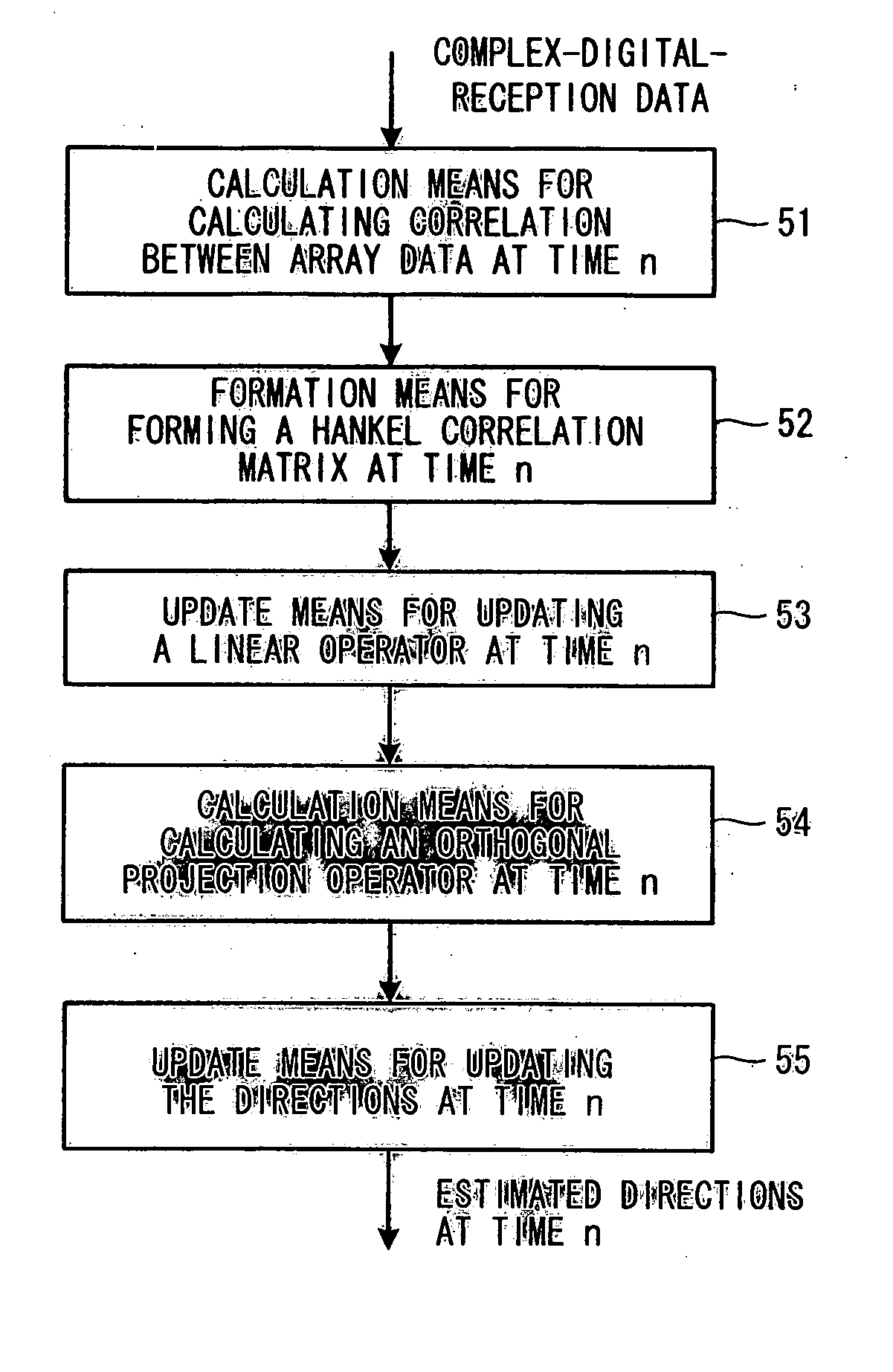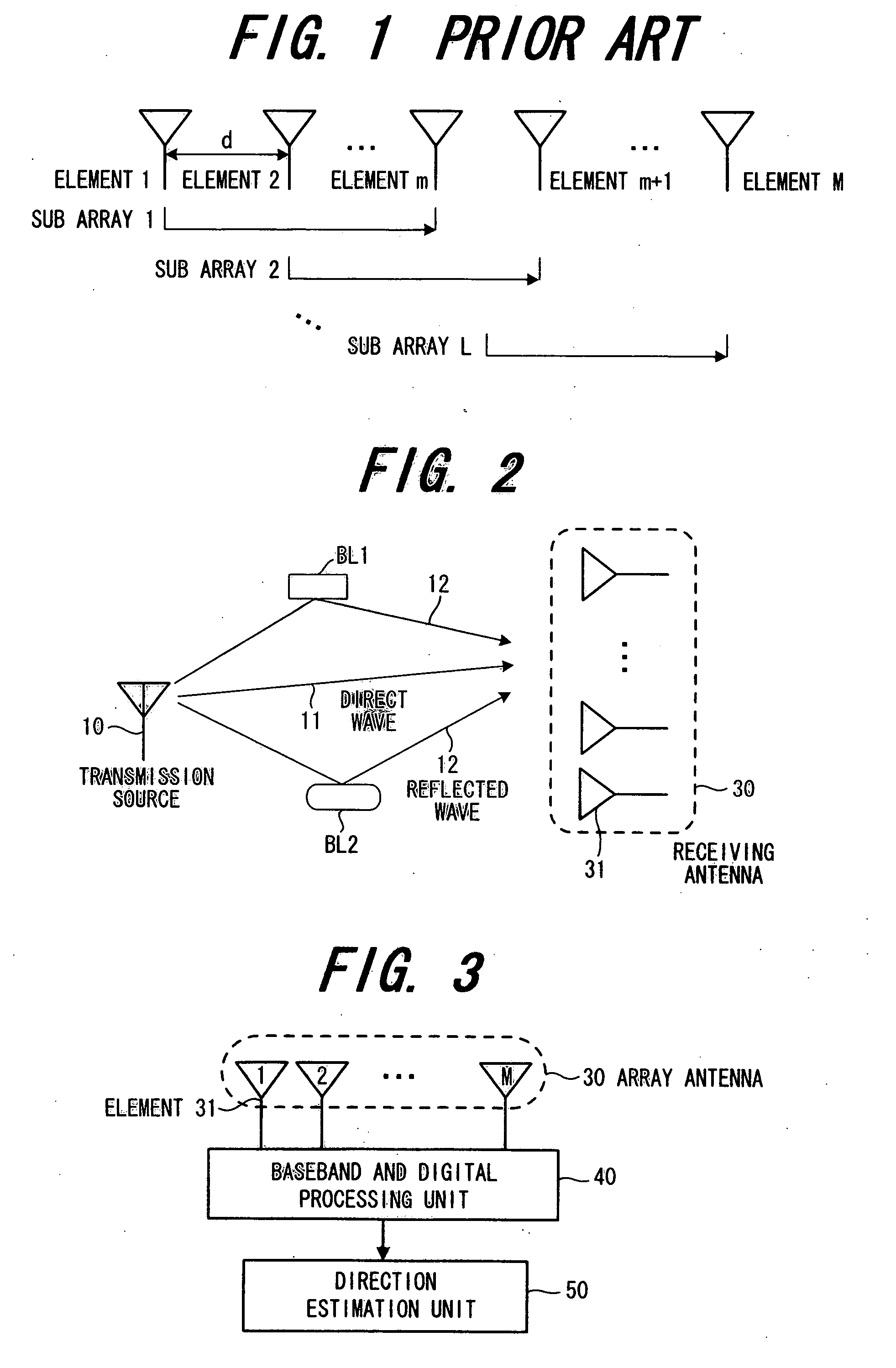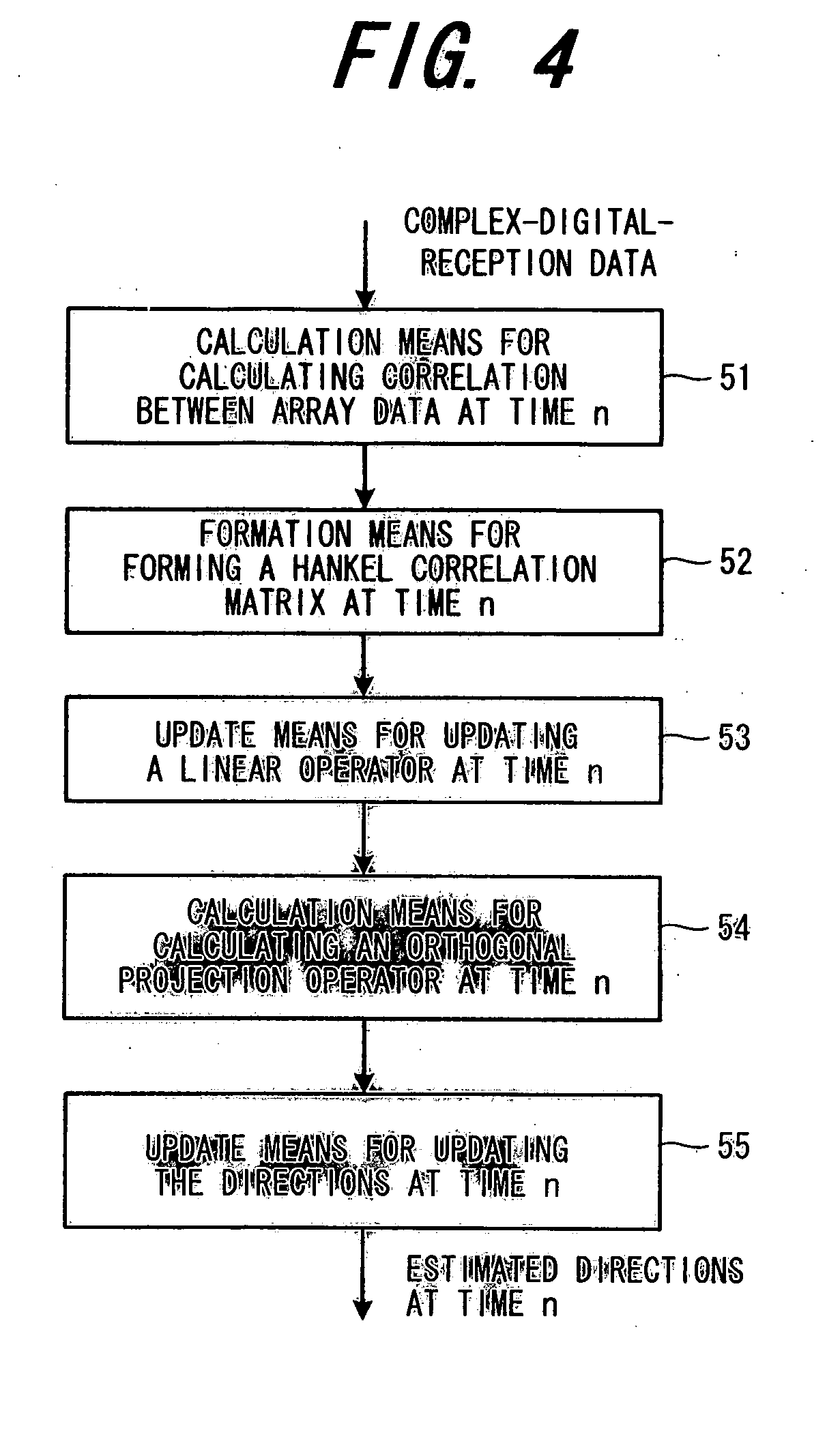Method and apparatus for adaptive direction estimation of radio waves
a radio wave and adaptive direction technology, applied in the direction of multi-channel direction-finding systems using radio waves, instruments, pulse techniques, etc., can solve the problems of high computational load of these methods, high processing time, and high computational workload of evd (or svd) processes, so as to reduce computational load
- Summary
- Abstract
- Description
- Claims
- Application Information
AI Technical Summary
Benefits of technology
Problems solved by technology
Method used
Image
Examples
first embodiment
(A) First Embodiment
[0047] This invention relates to an apparatus and method for estimating the directions of radio waves at a base station, and here the direction estimation will be explained with reference to the drawings. In the drawings, the same reference numbers will be given to parts or functions that are the same.
[0048]FIG. 1 is a drawing showing the construction of a ULA in which M antenna elements are located in a straight line at a distance interval of d. FIG. 2 is a drawing showing the positional relationship between the transmitting source 10 and the base station receiving antenna (array antenna) 30. In FIG. 2, the incoming signal from the transmitting source 10 impinging on the array antenna 30 is the direct wave 11, and the other incident signals are the reflected waves 12 due to reflection by buildings BL1, BL2 and the like. In the example shown in FIG. 2, two reflected waves are shown, however, hereafter, the total number of waves (coherent signals) including the d...
second embodiment
(B) Second Embodiment
[0069] In the first embodiment, four Hankel correlation matrices
φf(n)□Φf(n)□Φb(n)□Φb(n)
are formed, and each is divided into two upper and lower submatrices
Φf1(n)□Φf2(n)□Φf1(n)□Φf2(n)□Φb1(n)□Φb2(n)□Φb1(n)□Φb2(n) A
and further two matrices Φ1(n), Φ2(n) are formed from these matrices as shown in Equation 13, then a linear operator P(n) is calculated by using these matrices Φ1(n), Φ2(n) and finally the directions of radio waves are estimated. However, it is possible to form the matrices Φ1(n) and Φ2(n) by arbitrarily using one of four groups shown in (A) above, while the first embodiment is the case of forming the matrices Φ1(n), Φ2(n) by using four groups of the above (A) as shown in (13).
(a) Embodiment using One Arbitrary Group
[0070] One arbitrary group is selected from among the four groups in (A) above, and the matrices Φ1(n), Φ2(n) are determined from one of the following equations
Φ1(n)=Φf1(n)□Φ2(n)=Φf2(n) (25a)
Φ1(n)= Φf1(n)□Φ2(n)= Φf2(n) (25b) ...
third embodiment
(C) Third Embodiment
[0073] The first and second embodiments are embodiments in which the directions of radio waves are estimated in an environment of temporally and spatially uncorrelated white additive noise, where the correlation between the noise wi(n)□ w□(n) included in the signals received at the ith and jth antenna elements can be expressed by the following equations
E{wi(n)wj*(n)}=□□ □□□□□
E{wi(n)wj*(n)}=0 (□≠□)
In other words, this is the case in which the length of the spatial correlation of the noise is 1. This third embodiment is an embodiment in which the length of the spatial correlation of the noise is q (□1). When the length of the spatial correlation of the noise is q, the correlation between the noise wi(n)□ w□(n) included in the signals received at the ith and jth antenna elements can be expressed by the following equations
E{wi(n)wj*(n)}≠□ (□□□□□□□)
E{wi(n)wj*(n)}=0 (□□□□□□□)
In other words, when the length of the spatial correlation of the noise is q, the noise ...
PUM
 Login to View More
Login to View More Abstract
Description
Claims
Application Information
 Login to View More
Login to View More - R&D
- Intellectual Property
- Life Sciences
- Materials
- Tech Scout
- Unparalleled Data Quality
- Higher Quality Content
- 60% Fewer Hallucinations
Browse by: Latest US Patents, China's latest patents, Technical Efficacy Thesaurus, Application Domain, Technology Topic, Popular Technical Reports.
© 2025 PatSnap. All rights reserved.Legal|Privacy policy|Modern Slavery Act Transparency Statement|Sitemap|About US| Contact US: help@patsnap.com



